Stren Series preview: Texas Division
New division expected to further Lone Star State’s reputation as home of big bass in 2007
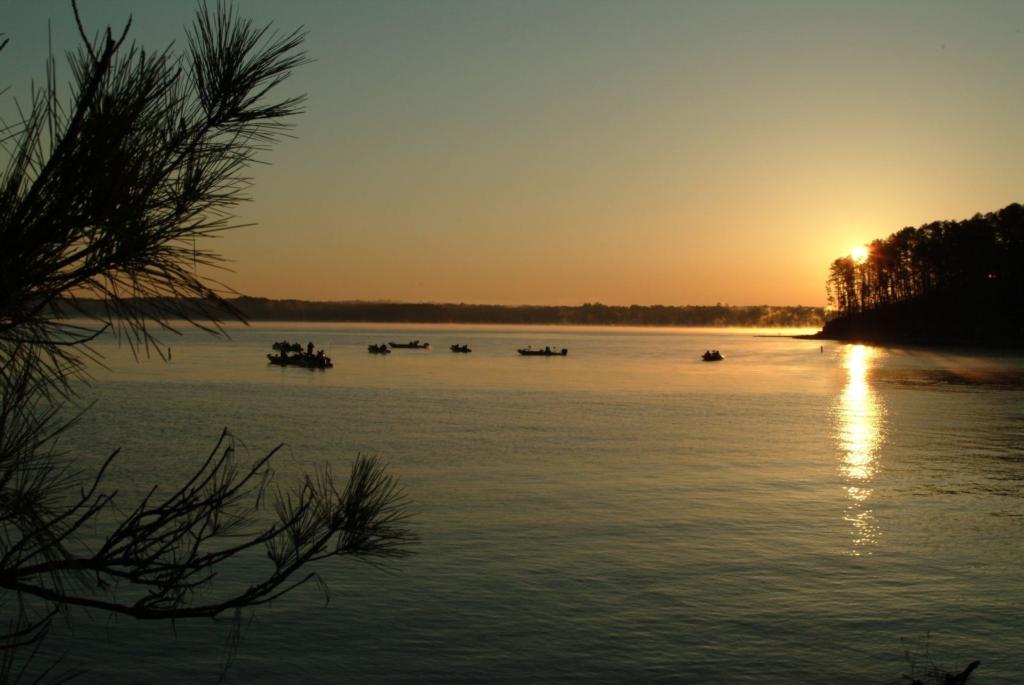
With Texas fisheries increasingly becoming must-fish events for Stren Series competitors, it makes sense that the Lone Star State would get its own division. Fisheries such as Sam Rayburn that were previously part of the Central Division lineup are now right at home in the brand-new Texas Division, which will almost certainly provide competitors and fishing fans with more than a few thrills.
First on the docket is Sam Rayburn Reservoir, a place well-known to Stren Series competitors for its top-notch largemouth fishing. Right now, Rayburn is suffering from high water levels and the fallout from a recent cold front, but Rayburn should still prove to be one for the books.
Next up is Lake Amistad, which just might be the hottest ticket in the nation these days in terms of tournament fishing. Everyone wants to give the huge border lake a try thanks to its abundance of eye-popping bass, and about the only thing that could stop the bite is a stiff wind, and even that won’t hurt it much.
Rounding out the season are tournaments on Toledo Bend and Lake Texoma. The Stren Series hasn’t been to Toledo Bend in eight years, and the tournament should be excellent if water levels remain stable. Texoma will likely close the season in typical Texas fashion, as competitors should be looking for more than 15 pounds a day to win.
With a schedule like this, Texas anglers are obviously excited. “Texas is kind of its own nation when it comes to bass fishing,” said Texas pro Wade Middleton. “These lakes are so diverse that there is no home-lake advantage. It’s a remarkable opportunity for those of us who fish in Texas.”
Sam Rayburn
Jasper, Texas
Feb. 7-10
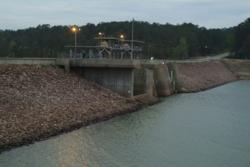 Sam Rayburn is a favorite Stren Series destination thanks to its reputation as a big-bass factory. If things are good, it is not unusual to see stringers topping the 20-pound mark weighed in at Sam Rayburn.
Sam Rayburn is a favorite Stren Series destination thanks to its reputation as a big-bass factory. If things are good, it is not unusual to see stringers topping the 20-pound mark weighed in at Sam Rayburn.
And while that potential is certainly there for this year’s Rayburn event, local pro Chris McCall said the situation is hampered a bit by high water – and cold water, at that.
“We’ve got conditions that we haven’t seen on the lake in a couple years,” McCall said. “It hasn’t been getting this high, and I can’t remember when the water temperature was 51 around here.”
When we talked to McCall eight days before the tournament is scheduled to begin, he was prefishing Rayburn and reported the 51-degree water temperature from the deck of his boat. He also mentioned he’d been having a tough time getting a bite. That said, though, there remain plenty of reasons to think the Rayburn tournament will be as solid as it usually is.
McCall said a couple of team tournaments and even a Wal-Mart Bass Fishing League event have been held on Rayburn in the weeks leading up to the Stren event, and competitors in those events have certainly caught them. The winner of the Jan. 27 BFL tournament took the top prize with a single-day catch of over 26 pounds.
“February is generally a great time to be here because the Rat-L-Trap bite is so good,” McCall said. “The fish are in the early stages of the prespawn. Right now, it’s hard to reach the grass with a Rat-L-Trap because the water is so high up over the grass. If we get some warm weather, guys will catch them.”
Though he admits that weights are hard to predict given the circumstances on Rayburn right now, McCall still expects to see a four-day winning weight of up to 60 pounds.
“Somebody’s going to catch 20 pounds and will follow it up with 12 or 13,” he said. “I think it’ll take 56 to 60 pounds to win it, about 13 pounds a day.”
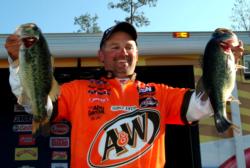 Those pounds will be made up entirely of largemouths. Rayburn can claim a few spots, but as McCall said, they are not a factor. These largemouths will also not be on beds due to the cold fronts that have hit east Texas in the weeks leading up to the Stren event.
Those pounds will be made up entirely of largemouths. Rayburn can claim a few spots, but as McCall said, they are not a factor. These largemouths will also not be on beds due to the cold fronts that have hit east Texas in the weeks leading up to the Stren event.
“I think if we had had a week or so of warm weather and this front hadn’t come through, we would have definitely seen some fish on beds,” McCall said. “They do want to get up there, but the weather is keeping them from it. However, there have been some nice fish weighed in (recently). In a tournament I fished in January, there was a 12-pounder weighed in, and I’ve heard of some sporadic 10-pounders.”
Knowing Rayburn is knowing the grass, and even with the high water, McCall admits that the key to fishing there is understanding how to fish hydrilla.
“It’s a grass lake; that’s what makes this lake so good,” he said. “That’s where the majority of the fish will come from, out of that grass. If there will be a little warming trend, there will be some fish caught out of the bushes.”
Current projected forecasts call for highs in the mid-60s for the Stren event, but whether that is too little, too late remains to be seen.
Lake Amistad
Del Rio, Texas
March 21-24
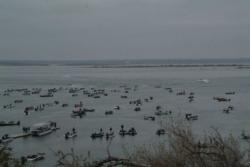 Texas Division competitors are likely chomping at the bit to visit this Texas-sized fishery, which sits on the border between the United States and Mexico. The bass that come out of this lake are muy grande indeed, not to mention the fact that they’re everywhere.
Texas Division competitors are likely chomping at the bit to visit this Texas-sized fishery, which sits on the border between the United States and Mexico. The bass that come out of this lake are muy grande indeed, not to mention the fact that they’re everywhere.
“I actually think that there could be bigger fish caught overall,” said Texas pro Wade Middleton of the 2007 Amistad tournament. “That time of year, the fish will be any depth you want to catch them. Anything that’s got a hook on it in your tacklebox that time of year could win.”
A tournament more prolific than last year’s Central Division event on Amistad is nearly unfathomable. The words “20-pound stringer” eventually failed to generate any interest because practically everyone was catching that much, and the winner broke a record with a two-day winning weight of 56 pounds, 7 ounces.
“Historically, spring break in Texas has always been the best time of year to be there as far as numbers, and we’re pretty much hitting that right about that time,” Middleton said. “This year, there are more than 80 tournaments scheduled at Amistad. There will be a lot of pressure, but it’s still a fish factory. There is so much water on that lake that’s not even tapped. And it’s the only lake in the nation where you can fish any pattern anywhere and win.”
And since the lake is so incredibly vast, there will be bass in every stage of the spawn – prespawn, spawn and postspawn. As practically any presentation could bring home the big check, asking what to throw is kind of a moot point, though Middleton did name Senkos, Carolina rigs on the dropoffs and spinnerbaits in the bushes.
According to Middleton, Amistad has emerged as a premier bass-fishing destination in recent years because of its abundance of grass and rising water levels. An influx of national tournament trails has also raised the profile of the huge Texas lake.
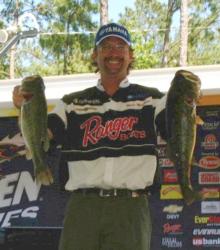 “The lake has definitely gotten better,” Middleton said. “This lake has climbed 60 to 70 feet, and each year, the grass has gotten better and better. We’ve had good spawn after good spawn. The lake has always had a reputation for producing a lot of fish, and in the last six to seven years, there has been an incredible explosion of big fish.”
“The lake has definitely gotten better,” Middleton said. “This lake has climbed 60 to 70 feet, and each year, the grass has gotten better and better. We’ve had good spawn after good spawn. The lake has always had a reputation for producing a lot of fish, and in the last six to seven years, there has been an incredible explosion of big fish.”
Middleton said the only thing that could put a damper on the bite at Amistad is the wind. He expects mild air temperatures and stable water temperatures, but Amistad is prone to south winds in excess of 20 mph.
“That’s why a lot of locals call it The Big Windy,” Middleton said. “A guy’s got to know that he’s got to catch 40 pounds to make the cut, and to win, it’s going to take more than a hundred pounds over four days. The only thing that would change that would be 20 mph winds, but even then, you’re going to see big weights caught.”
Much like Sam Rayburn, at Amistad, you’re fishing for largemouths or you’re fishing for last. Middleton said that depth-wise, Amistad is very diverse. There are shallow, hydrilla-covered flats, but there is also water that will drop off to 150 feet.
“Predominantly people fish in less than 10 feet of water, but it could easily be won in more than 40 feet of water,” he said.
And while the lake offers a smorgasbord of everything – weights, depths, cover, baits to choose from – the key is to think like Amistad. In other words, think big.
“The key to winning here is go big or go home, really,” Middleton said. “You can win doing anything, but in reality, you’ve got to get some big bites. Amistad doesn’t kick out a lot of 10-pounders, but a guy needs a couple of 8- to 10-pounders to win, because somebody’s going to get that bite, and they’re going to put enough 5-pounders with it that you can’t catch them.”
Toledo Bend
Hemphill, Texas
June 20-23
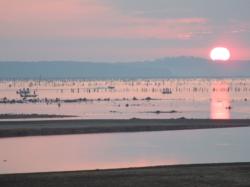 If water levels cooperate, Texas Division competitors should have another chance at a hot Texas bite when they hit Toledo Bend, a site the Stren Series has not visited in eight years. According to local pro Jerrel Pringle, those eight years have given the lake a chance to catch up.
If water levels cooperate, Texas Division competitors should have another chance at a hot Texas bite when they hit Toledo Bend, a site the Stren Series has not visited in eight years. According to local pro Jerrel Pringle, those eight years have given the lake a chance to catch up.
“For the first time in two years, we’ve got the lake up to normal level,” Pringle said. “The last two years, we had record lows in the summertime because of the drought, but now the lake is up and full. Hopefully, we’ll be able to maintain that.”
Also shrinking Toledo Bend is electricity, as what water the drought didn’t claim was used to charge up the surrounding area. But if the rain falls and the levels hold up, Toledo Bend should be in fine shape when the Stren Series comes in late June.
“By then, the water has warmed up and the fish have gone to structure,” Pringle said. “They’ve gone to deep creek bends and underwater humps. The river channel’s a big thing, depending on how the hydrilla is. People will be fishing behind the grass lines. It all depends on the fluctuation of the lake. If it doesn’t drop a bunch, we’ll have a good tournament.”
One thing competitors can count on is the heat. Texas in June can be awfully unforgiving, and Pringle says it’s highly likely that temperatures will soar into the 90s. He expects a pretty solid top-water bite in the cooler morning hours.
He also expects to see some pretty solid weights – Pringle says 25-pound stringers are not out of the question, and he predicts that it will take 17 pounds per day over four days to win. And like Sam Rayburn and Lake Amistad, the winner at Toledo Bend will take the crown with a bag full of largemouths.
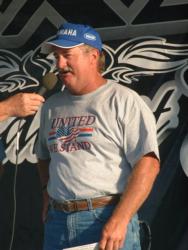 “They will have already gone back to the structure,” Pringle said of Toledo Bend’s largemouths in June. “There are some shallower fish in some areas at the upper end around vegetation. The last few years, there have been more lily pads coming on, and some of those fish will stay shallow, which makes for the good topwater frog bite.”
“They will have already gone back to the structure,” Pringle said of Toledo Bend’s largemouths in June. “There are some shallower fish in some areas at the upper end around vegetation. The last few years, there have been more lily pads coming on, and some of those fish will stay shallow, which makes for the good topwater frog bite.”
Pringle said that as far as depths go, Toledo Bend is relatively deep, stretching as far down as 60 to 70 feet in some places. Most of the fish, though, are found in the shallower places.
“The flats range 3 to 5 feet out to 17 to 18 feet,” he said. “You’ve got structure in the 25- to 30-foot range, and there are a lot of fish at that depth.”
To catch them, Pringle recommends crankbaits, Carolina rigs, drop-shots and Spooks around the structure. For the lily pads and vegetation, Pringle mentions plastic frogs. He also wouldn’t count out a decent spinnerbait and buzzbait bite, either.
The fact that Toledo Bend is so large and can play to so many different strengths is what makes it a desirable tournament location, according to Pringle. The winner, he says, will have figured out something about a specific area of the lake and will ride that all the way to victory.
“It’s a big lake – 84 miles long,” Pringle said. “If you’re a shallow fisherman, you’re on the upper-end structure. There’s a lot of lake to work with. You can fish a lifetime and not learn the whole lake.”
Lake Texoma
Oct. 17-20
Denison, Texas
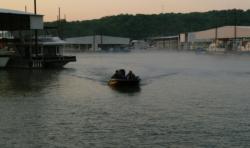 Four months after the third event of the season, the Texas Division will finally wrap things up in mid-October when they descend upon Lake Texoma for the season closer. And while Toledo Bend will be solid if the water levels are high, Texoma will be a good event if the water levels stay low.
Four months after the third event of the season, the Texas Division will finally wrap things up in mid-October when they descend upon Lake Texoma for the season closer. And while Toledo Bend will be solid if the water levels are high, Texoma will be a good event if the water levels stay low.
“It should be a really good tournament if the lake is low,” said Spencer McAlester, a Texoma pro. “The manmade brush piles will be the key. There will be a good topwater bite that time of year, and the smallmouths really gang up. The Kentuckys really gang up too that time of year, but it’s hard to catch a big stringer. But you can catch 10- to 12-pound limits of Kentuckys on one hole.”
If that sounds like a big stringer to you, bear in mind that McAlester thinks it could take as much as 16 pounds per day to win. He says the mid-October bite may be the best of the year except for the spawn.
Like at Amistad, competitors on Texoma need to be cautious of the wind, because if the wind blows hard in October, the bite suffers. “It will limit a lot of water if the wind blows,” McAlester said.
McAlester expects a good topwater bite in the mornings, and if it’s cloudy, then topwaters will work all day. However, the winning stringer will likely come out of the brush piles.
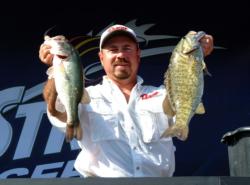 “On the lower end of the lake is some really good spotted-bass water,” McAlester said. “Normally smallmouths are from the middle of the lake toward the dam, which is basically the same as the spotted bass. Go up the river and you’re going to get more into the blacks.”
“On the lower end of the lake is some really good spotted-bass water,” McAlester said. “Normally smallmouths are from the middle of the lake toward the dam, which is basically the same as the spotted bass. Go up the river and you’re going to get more into the blacks.”
McAlester said the tournament will not be won on spots, but you can bet that the winner will have one or two in his bag. He recommends filling up your livewell with spots and then cruising for kicker largemouth.
As for baits, McAlester likes jigs and power worms, in addition to creature baits. The 76,000-acre lake is fairly deep, but he expects most of the fishing to be done in 20 to 25 feet of water.
“We don’t have a lot of structure,” he said. “The fish will be on rocks or manmade brush piles.”
And though the fish are there for the taking at Texoma, that shouldn’t lead one to believe it’s going to be easy. In fact, the opposite is true.
“It will be feast or famine,” McAlester said. “It can be really good that time of year. The guys that find them will catch a lot, and some guys will struggle.”